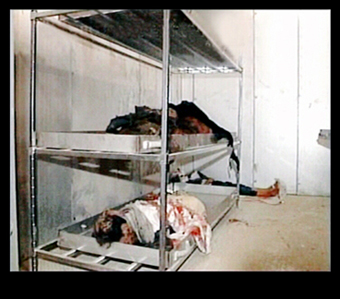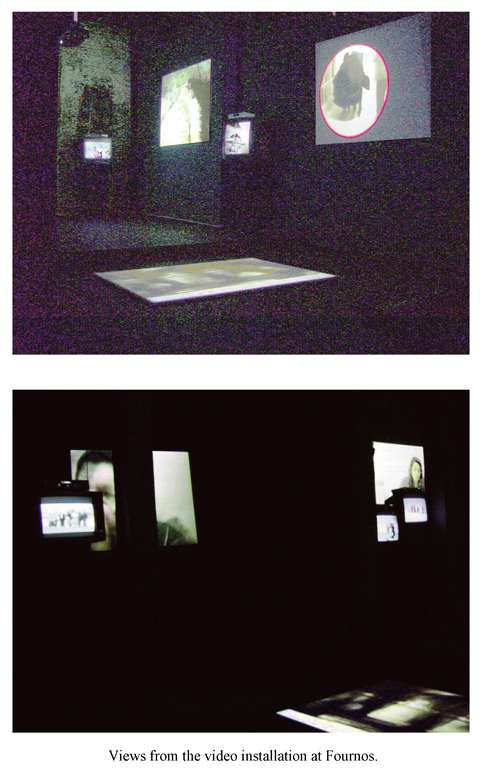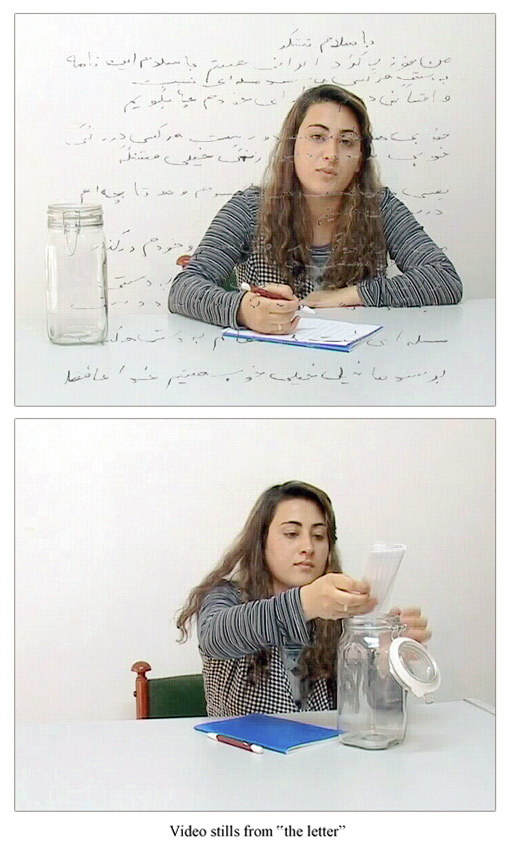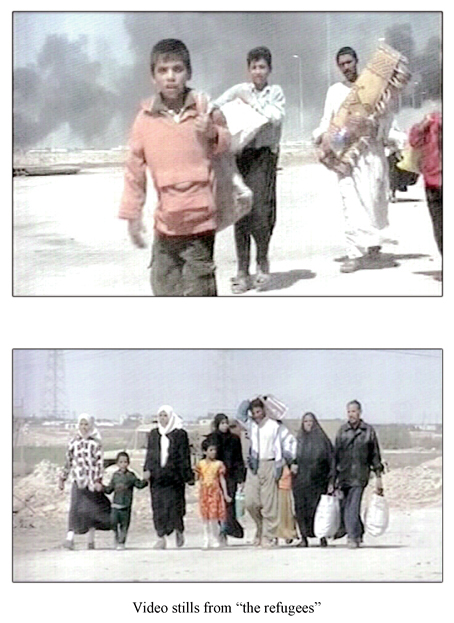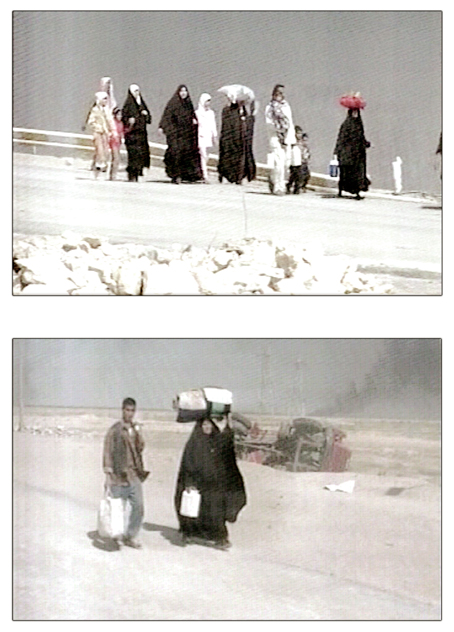THE SLAUGHTER OF THE LAMBS
A JOURNAL OF 2002 – 2003 IN 11 VIDEO PROJECTIONS
OCTOBER 2002 – JUNE 2003
Popi Krouska visits the refugee reception and hospitality centres of the Medecins Du Monde. She attempts to approach them, to talk with them, to watch them as they write their heartfelt letter to their people back in their distant country. Frightened people, desperate, who will not open up easily.
Their hopes of these thoughts and sentiments reaching their home country are as many as those of the shipwrecked sailor who puts his notes in a bottle.
MARCH & APRIL 2003
Krouska records on video the evening news, the images which will become the documentary evidence of our civilisation at the turn of the third millennium. The bombs hit Iraq like a golden rain. A few hours later some people will be setting off on a long march to nowhere, others will be mourning their children, the imams will be preaching a holy war. And someone will be cutting down a person he has never seen before.
APRIL 2003
Good Thursday. The neighbour is slaughtering the lambs for Easter Sunday. Krouska looks on and videotapes the scene. In our culture the lamb, the symbol of sacrifice, is killed to complete the sacrificial rite and begin the feast.
The mental associations are inevitable. The slaughter of the lamb – a common cultural good, necessary food and commodity of an economy which does not fear blood.
The work of Popi Krouska remains in tune with the reality of our time. It is a sequel to her “Soup” of 2002, a composition of virtual reality on the viewer’s plate where the war in Afghanistan and the commercials become an indivisible whole in the living room of pleasure and digestion.
The time is common. In the battlefield that appears on our screens the airplanes and the targets are the same: Gulf, Kosovo, New York, Afghanistan, Iraq. Aggressors and victims, innocent people who will not return to their countries; innocent people who flee their countries.
“The slaughter of the lambs”, a scrap of narrative from the theatres of war, establishes a direct dialogue with a contemporary issue, written in the idiom of our time. Static images of death, flashes of lightning, rhythmically moving feet, massacre and wailings are addressed to the present-day Pietá whose gaze does not include the slaughter of the lamb owned by the neighbour and the entire world.
The art of Krouska, political and humanitarian, joins in the discourse of contemporary artists who feel responsible for the civilisation of our age.
Thirty years after the dynamic and vociferous artistic denunciation of the woes from the seven-year dictatorship, the dawn of the new millennium finds again some Greek artists who are vigilant, with a live and occasionally guilty conscience. Maria Marangou |
